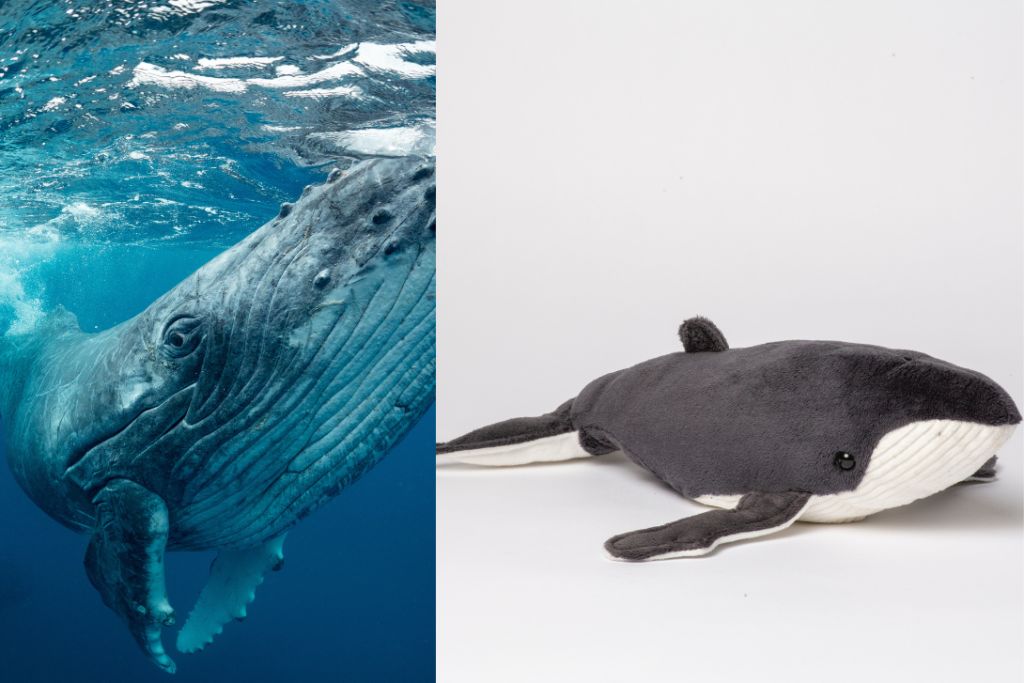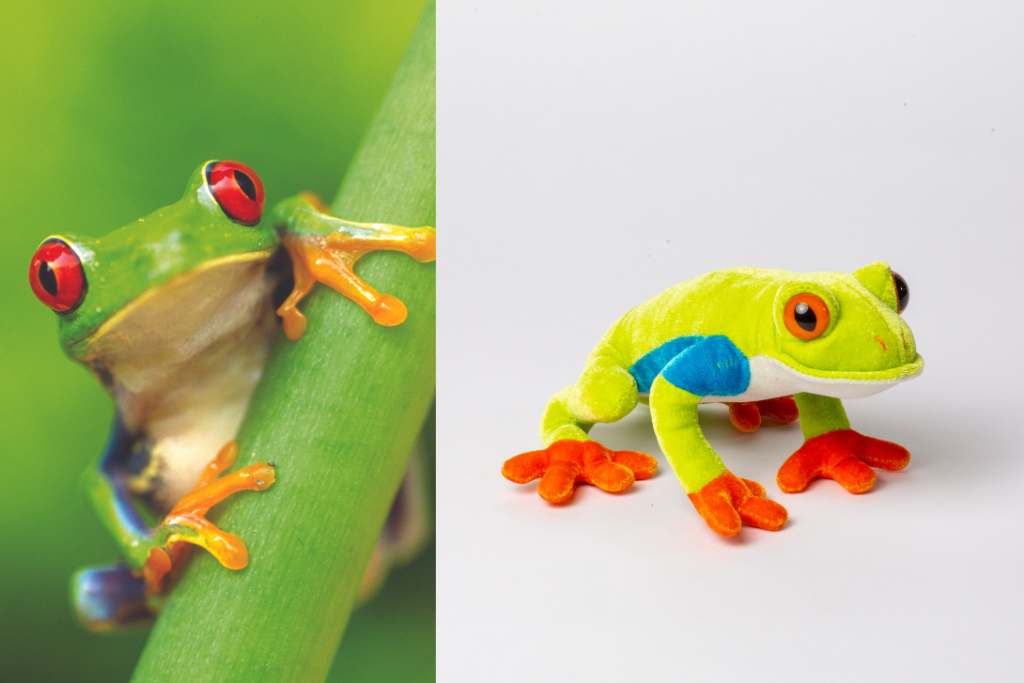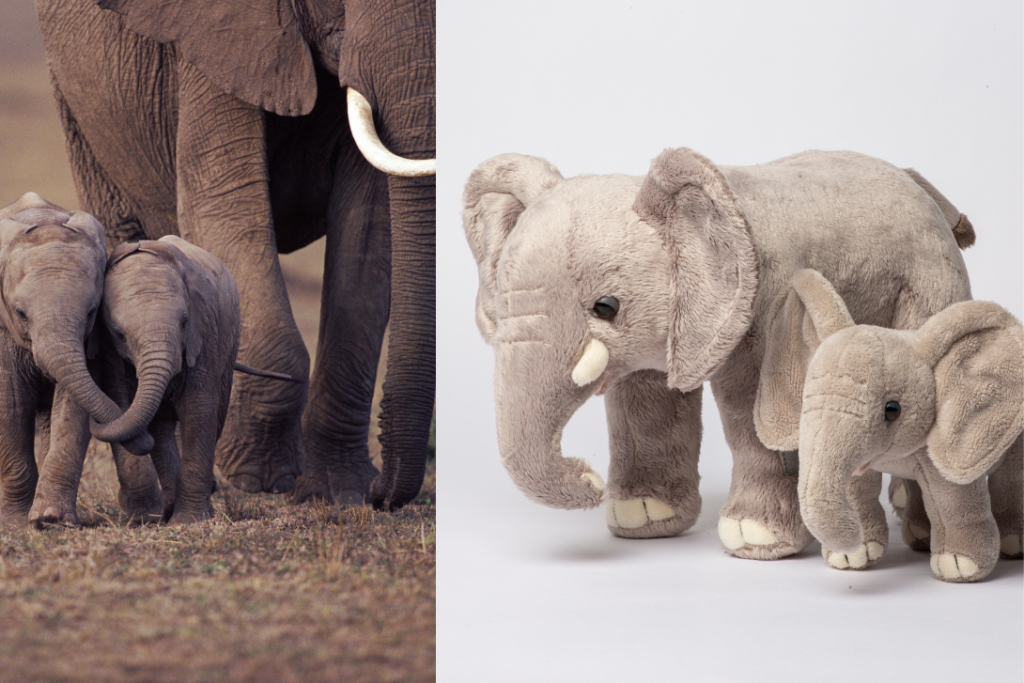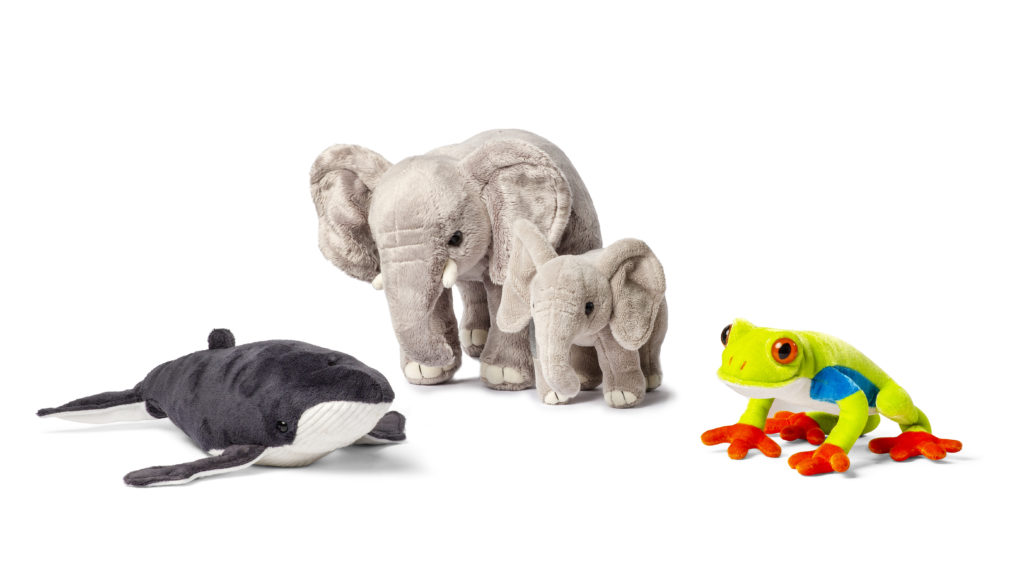WWF-Canada Gift Guide: Discover three new species you can symbolically adopt
Hey, did you hear? The humpback whale — famed for its melodic underwater songs — was just added to WWF-Canada’s collection of symbolic adoptions. And this whale of a stuffie is being joined by the vibrant red-eyed tree frog and the enormously cute African elephant family.
Discover some fun facts about these three species and explore why our newly adoptable trio make meaningful holiday gifts that won’t be forgotten.
Humpback whale: Underwater pop star

Despite their massive size, this acrobatic whale is often spotted leaping out of the water and slapping its tail (fluke) and flippers (pectoral fins) on the water’s surface. Male humpbacks are known for their beautiful songs that last a few minutes but can be repeated for several hours and heard several kilometres away.
Diet: Humpbacks feed mostly on krill and other small, schooling fish. When in a group, humpback whales use a technique called bubble-net feeding to corral and disorient prey by creating a circle of bubbles around the fish that traps them in the middle. They will then take turns swimming through the herded prey using their massive mouths to catch and filter their food through brush-like structures called baleen plates.
Habitat: Humpback whales live in oceans all around the world and migrate vast distances annually — from summer feeding grounds near the poles to warmer winter breeding waters closer to the equator. The North Atlantic population is considered of Special Concern.
Fun fact: Adult tail pigmentation patterns are distinctive enough to be used like fingerprints to identify individuals.
Red-eyed tree frog: Master of disguise

At just four to seven centimetres long, these tiny creatures use their vivid colours as a defense mechanism. Their green bodies help blend in with leaves and their big red eyes startle predators, giving the frogs time to get away.
Diet: They feed mostly on tiny insects such as moths, crickets, flies and grasshoppers.
Habitat: Red-eyed tree frogs live 15 metres or more above the ground in the lowland rainforests of Mexico and Central and South America. During the rainy season, red-eyed tree frogs descend from their lofty perches to breed near ponds and puddles.
Threats: Red-eyed tree frog numbers are declining due to factors like habitat loss.
Fun fact: Despite their bright colouration, red-eyed tree frogs are not poisonous.
African elephant family: Massively maternal

This gentle giant and is known for a wide variety of behaviors like social learning, cooperation, memory, play, allomothering and even vocalizations that may indicate emotions!
The close bond between elephant moms and their calves inspired the newest family adoption. Offspring can usually be found sticking close to their mom, and in times of danger other females in the herd will help protect young members. Female elephants often stay in same herd with their mothers for their entire lives, while males leave the group when they are mature and ready to breed.
Diet: African elephants mainly eat leaves and bark of trees but they also eat grasses and fruit.
Habitat: The African savanna elephant is found throughout the grassy plains and bushlands of the continent, while the African forest elephant lives in the tropical forests of Central and Western Africa.
Threats: Once common throughout Africa, elephant numbers were severely depleted in the 19th century, largely due to the destructive ivory trade. While some populations are now stable, poaching and habitat destruction continue endanger to this animal.
Fun fact: They can eat up to 200 kg of food in 24 hours and can drink more than 200 litres of water.
Why symbolically adopt?
WWF-Canada’s symbolic adoptions program offers animal lovers the chance to bring home their favourite species or give a meaningful gift that supports conservation efforts.
Each adoption kit costs between $50-$100 and comes with a personalized adoption certificate and an educational poster so recipients can learn more about the species and how their symbolic adoption is making a difference.



